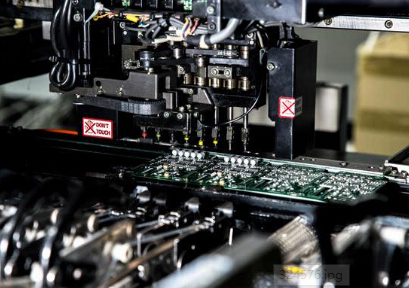The anti-paint protects the assembly from moisture, dust, chemicals, and high temperatures in the operating environment where the electronic assembly is ultimately used. When we have to remove or replace components due to field failures or manufacturing defects, we must first remove the coating covering the components, and then remove and replace the components. The correct method must be selected to remove this coating to avoid damage to the PCB or adjacent components.
In the rework process, if the coating on the bottom surface of the component is not completely removed, the pad may be torn off the circuit board when the component is removed. Failure to completely peel the coating may mean that the solder may "spray out" from the package during reflow during the rework process, causing a short circuit. These problems, as well as other problems, may be caused by improperly peeling off the conformal paint.
There are many ways to remove the conformal paint on the electronic assembly. The method and material used to remove the coating are determined by the type, hardness and size of the area to be removed. The most commonly used cleaning methods are chemical peeling, mechanical peeling, heat scraping, mechanical scraping, and laser ablation.
Some coatings can use chemical solvents to

soften or partially dissolve these coatings. The scavenger is recommended by the paint manufacturer or made according to the formula recommended by the paint manufacturer. Following the manufacturer's instructions can avoid damage to the circuit board and components as much as possible, but it is always a good idea to test the scavenger on discarded circuit boards. In many cases, masking the surrounding area can be used to selectively apply solvents with cotton swabs. Once the coating material becomes soft, you can gently remove the coating with a brush or wooden stick.
In many cases, it is necessary to add neutralizers around the clearing area to prevent the continuous effect of the solvent. If the chemicals of the scavenger are not thoroughly cleaned, ionic residues will remain on the circuit board, affecting the reliability of the components. Acrylic tri-proof paint is the most sensitive to solvents. Therefore, they can be easily removed using this technology. Clear away. Silicone and polyurethane coatings are the least sensitive to cleaning solvents. Under normal circumstances, solvent removal technology is not effective for epoxy resin and p-xylene.
Some conformal paints can be removed from the surface of PCB circuit boards and components by simple peeling or scraping. You can use a toothpick, wooden stick, or sharp knife to remove these soft coatings. This mechanical removal method can be combined with heating or solvent removal techniques. In this demolition process, care must be taken to ensure that components and laminates are not damaged. This cleaning technology is often used to remove soft silicone-based three-proof paint or other flexible three-proof paint.
Another coating removal technique uses a heat source to soften or decompose the coating to be removed. Usually a heat gun or soldering iron is used as the heat source. After the coating to be removed is softened, you can use a dental tool or a wooden stick to gently press to peel off the coating. This removal method is suitable for most conformal paints. Special care must be taken when heating the coating to avoid damage to the laminate under the component or adjacent components. This technique can be used to remove acrylic, epoxy and silicone coatings.
The micro-grinding coating removal method uses various soft abrasives to break the three-proof paint through a nozzle accelerated by a small inert gas. The mixture of walnut shell, glass, plastic bead powder, and other various powder mixtures are pushed to the coating by the nozzle The surface of the coating is ground a little bit by air pressure, and the removal of the nozzle directly affects the effect of the process. A source of ionized air is usually used to offset the electrostatic charge generated in this process. In the conformal coating of circuit board conformal paint, this process can be used to remove coatings including p-xylene, polyurethane and epoxy-based coatings.
In the case of precise removal of the three-proof paint, use a low-light source. The high energy density pulses of the laser gradually remove or ablate the coating material. It is necessary to establish a laser source with the correct energy level and frequency, as well as several laser source channels, so that it will only ablate the coating without damaging the material under or around the coating location. The laser beam area as small as a few microns can selectively ablate the paint. This method can be used to remove polyxylene paint.
Visually check to determine whether the three-proof paint in the PCBA has been removed in the correct area.